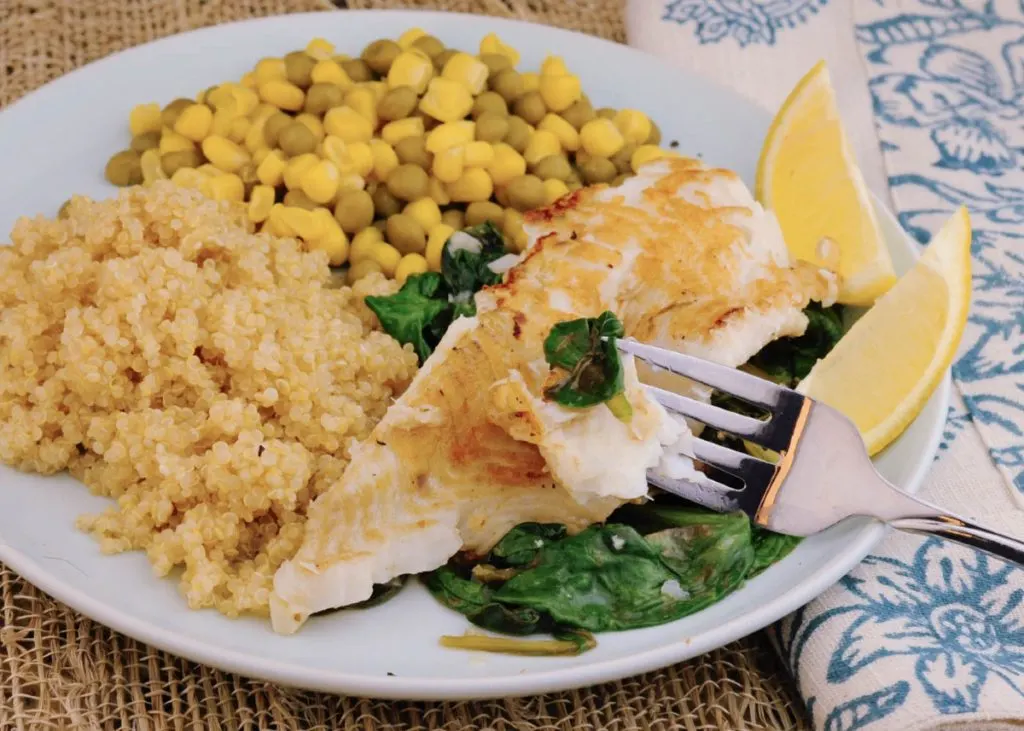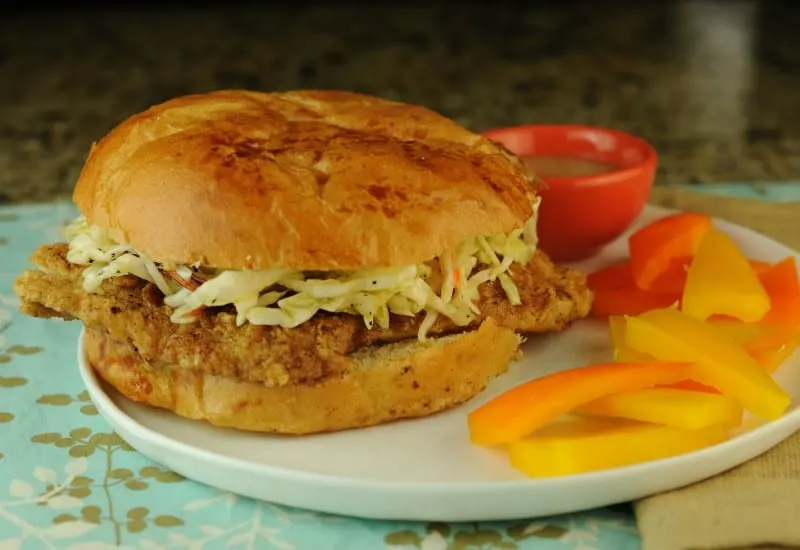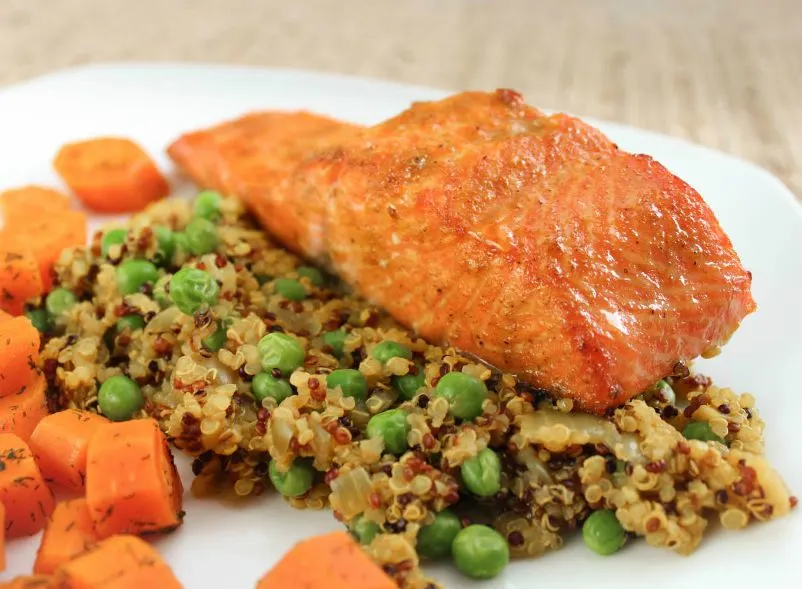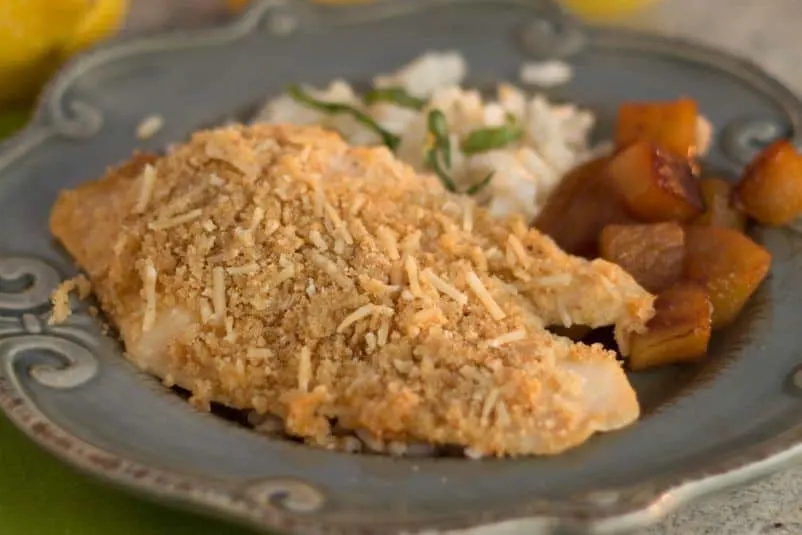We’ve all been there: you make a beautiful meal plan and head to the grocery store for your ingredients, only to find that the type of fish you were planning on preparing is unavailable, too pricey, or looking less than fresh. But worry not! We’ve pulled together a fish substitution guide so that you can still make the meal you planned for, even when you can’t find the fish you wished for.

We’ve all heard that we should be incorporating more seafood into our diets but, sadly, this can feel much easier said than done. In my years of helping people to become more comfortable with cooking, I have found that seafood is one of the types of food that people struggle with most. I think this is due to two things: (1) many people find seafood to be kind of an unknown quantity and are, therefore, nervous about purchasing and preparing it and (2) it is often more expensive than other protein sources, which can make it hard to fit into a family’s food budget.
To help you to overcome these obstacles, I have put together this post that will help to demystify seafood. I’ll explain why eating fish is great for you health-wise, offer different fish substitutions that will help you to find the right (and reasonably-priced) seafood for your meal, and share some super simple recipes that will help to take the fear out of cooking fish.
Why Eating Fish is Good for You
There are a number of reasons why eating seafood is good for you, which is why the American Heart Association, among others, recommend that we eat at least two servings of fish each week.
Fish: A Nutritional Powerhouse
So what does fish actually offer us in terms of nutrition?
First, it is important to note that seafood is an excellent lean protein source. In addition, fish is packed with nutrients including Vitamin D, Vitamin B2 (riboflavin), and selenium. And finally, seafood, and especially fatty fish, such as salmon, mackerel, sardines, herring, and anchovies, are a wonderful source of omega-3 fatty acids.
The Benefits Gained from Eating Seafood
So what does eating fish actually do for you?
Well, study after study has shown that eating fish is good for decreasing your risk of heart disease, lowering blood pressure, reducing inflammation, and improving blood vessel function. In addition, there is evidence that the omega-3’s in seafood may decrease the risk of a number of disorders including Alzheimer’s, dementia, depression, diabetes, ADHD, and depression. Finally, in terms of children’s development, omega-3 fatty acids have been show to help in both brain and vision development during pregnancy.
Fish Substitution Guide
So now that I have (hopefully) convinced you that eating seafood is nutritionally important, I want to further reduce the barriers to cooking fish for yourself and your family. As I see it, there are three common barriers to eating seafood: price, worries about safety and environmental impact, and unfamiliarity with preparation. So I have pulled together a list of fish substitutions and recipes that will help to assuage these all of these anxieties.
I divided the fish up into different categories, grouped by texture and color:
- white, lean and firm
- white, firm, and oil-rich
- medium-color and oil-rich
- white, lean, and flaky
Then, within the categories, the different types of fish have been ranked so that the most eco- and people-friendly options (fish that are best for you and the planet) are at the top of the list.
My hope is that you can then use these lists to confidently substitute, as needed, based on price and quality (at whatever balance is best for you).
Then, once you have got your fish in hand, I have provided some super simple recipes that will help you to explore these different types of seafood with confidence!

White, Lean and Firm
These fish have a more solid, meatier texture and can hold up well in sandwiches or with a sauce on top. They are also good for grilling.
- Catfish
- Pacific Halibut
- Alaskan Pollock
- Haddock
- Pacific Cod
- Pacific Rockfish
- Striped Bass
- Swordfish
Recipe: Our Cajun Fish Sandwiches (pictured above) are a great introduction to this fish, especially for seafood skeptics.
White, Firm, and Oil-Rich
These fish are solid, flavorful, and rich in omega-3 fatty acids. Like the group above, they hold up well to sauces and grilling.
- California White Sea Bass
- Pacific Sablefish
- White Sturgeon
Recipe: This Mediterranean Pan-Seared Sea Bass is ready in just 15 minutes and piles on the flavor!

Medium-Colored and Oil-Rich
Flavorful and hearty are words that I would use to describe this very popular group of fish. This category is also super-rich in omega-3 fatty acids. Grilling, pan-searing, and baking all work very well with these fish.
- Wild Salmon
- Arctic Char
- Yellowfin Tuna
- Mahi Mahi
- Paddlefish
- Wahoo
Recipe: This Indian-Spiced Salmon (pictured above) is one of the most popular recipes on The Scramble and couldn’t be easier to make!

White, Lean, and Flaky
These fish tend to be a bit more delicate, but that doesn’t mean they aren’t easy to cook! In fact, one of the benefits of preparing this category of fish is that it is ready SUPER quickly! My favorite ways to prepare this group of seafood is either baked or pan-seared.
- Rainbow Trout
- Black Sea Bass
- Flounder
- Tilapia
Recipe: This Baked Flounder with Parmesan Crust (pictured above) is a tasty option for white, lean flaky fish.
For more information on enjoying healthy seafood while maintaining ocean ecosystems, see Environmental Defense Fund’s Seafood Selector and the Monterey Aquarium’s Seafood Watch.

Karen
Wednesday 7th of May 2014
Thanks - this is really helpful!!! I am always standing there stymied at the fish counter :-)